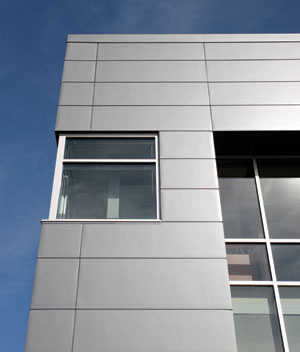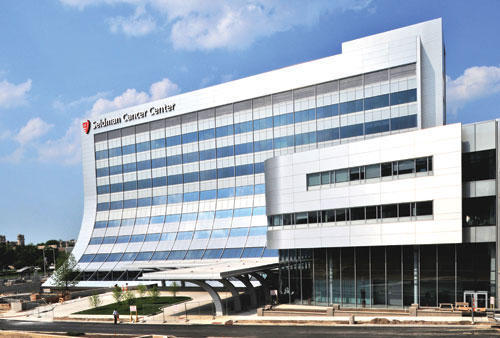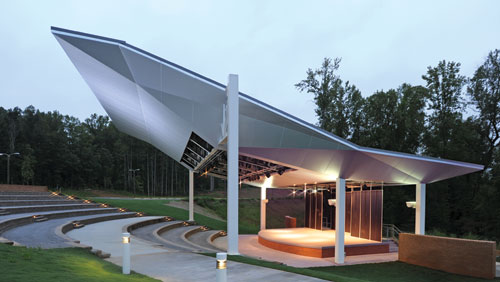Innovative Metal Solutions for the Built Environment
Industry Trends
 |
An insulated metal panel system at Pacific Plaza, Tacoma, Washington, provides an air and vapor barrier. Architect: BLRB Architects. Photo courtesy of Metl-Span |
According to George Rosado, commercial director for Alcoa Architectural Products, “Emerging trends indicate an increasing number of imported metal products. However, using them involves great risk, because there is no control over whether these imports will meet North American building codes and industry standards.” U.S. contractors have no control over what actually gets shipped, and whether appropriate testing and verification is even available on imported materials. If an imported material fails to perform, contacting an overseas manufacturer for replacement may be problematic. The risk can be significant, when the effects of failure, lost downtime, replacement, bonding, and insurance are considered.
Metal ceilings for commercial applications are gaining in popularity in the U.S. after decades of use as building standards in Europe. Public structures such as airports, subways, universities, and office buildings are benefiting from the durability and accessibility of metal ceilings. These applications illustrate the variety of finishes available on metal ceilings, says Edward Williams, business unit manager for metal ceilings at Chicago Metallic.
“Insulated metal panels (IMPs) are highly efficient building envelope products with multiple benefits. Their high R-values and insulating qualities lower heating and cooling costs year-round. IMPs contribute significantly to sustainability and LEED points,” says Doug Pickens, vice president of marketing, Metl-Span.
 |
The 10-story, 375,000-square-foot Seidman Cancer Center in Cleveland, Ohio, features 59,000 square feet of brushed aluminum composite material on the exterior and the interior building fascia, soffits, and parapet panels. Architect: Cannon Design. Photo by Mark Kempf Photography; courtesy of Alcoa Architectural Products |
Self-Cleaning Buildings
Aluminum is the most abundant metal in the earth's crust, comprising about 8 percent by weight of the earth's solid surface. Aluminum is silvery white, insoluble in water under normal circumstances, and is known for its ability to resist corrosion. Structural components made from aluminum and its alloys are vital to the building, transportation, and aerospace industries. Due to its infinite recyclability, aluminum could be considered a manufactured natural resource. At present, almost 75 percent of all the primary aluminum ever produced since 1888 is still in productive use today.
Aluminum composite material is a composite panel consisting of an extruded thermoplastic compound core that is fusion-bonded in a continuous process between two sheets of coil-coated aluminum, brushed aluminum, zinc, stainless steel, titanium, or copper. The result is a highly corrosion-resistant, rigid, flexible material that weighs 3.4 times less than steel and 1.6 times less than pure aluminum.
Aluminum composite panels are flat, malleable, lightweight, durable, and can be painted in a range of colors and finishes with exterior warranties up to 30 years. They integrate easily with most curtain walls, creating a seamless look on building facades. This highly formable material can be used to create curves and design accents.
A new technology is available to assist building owners and architects in addressing building maintenance. An innovative coating, when applied to aluminum composite materials, can help buildings become self-cleaning. Research shows that titanium dioxide coil-coated aluminum architectural panels remove pollutants by using sunlight, water vapor, and oxygen in the air to clean the air around it. Titanium dioxide coil-coated aluminum architectural panels are appropriate for office buildings, retail facilities, car dealerships, chain restaurants, elementary schools, and other applications.
 |
The canopy at the Piedmont College Arrendale Amphitheater, Demorest, Georgia, was sculpted from aluminum composite material to reflect the natural environment bordering the site. Architect: Armentrout Roebuck Matheny Consulting Group. Photo by Mark Kempf Photography; courtesy of Alcoa Architectural Products |









